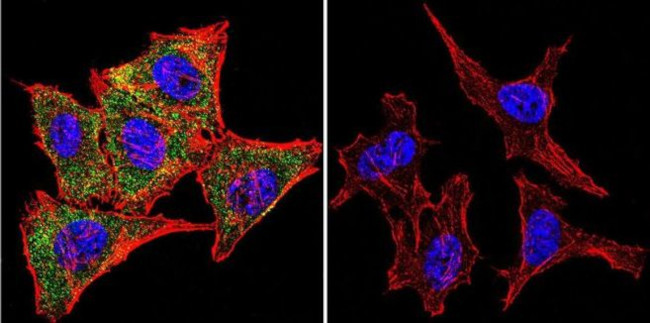Search Thermo Fisher Scientific
Invitrogen
Calmodulin Monoclonal Antibody (2D1)
FIGURE: 1 / 12
Calmodulin Antibody (MA3-917) in ICC/IF


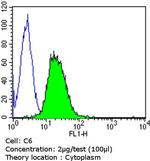
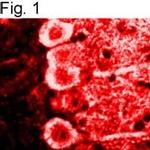
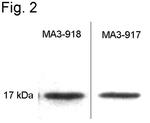



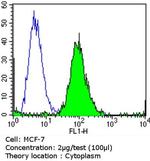
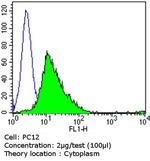
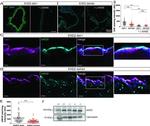
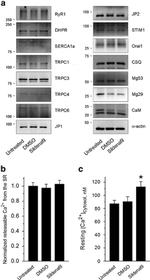
Product Details
MA3-917
Species Reactivity
Published species
Host/Isotype
Class
Type
Clone
Immunogen
Conjugate
Form
Concentration
Purification
Storage buffer
Contains
Storage conditions
Shipping conditions
RRID
Product Specific Information
MA3-917 detects calmodulin from human, bovine, chicken, Chlamydomonas, Dictyostelium, mouse and rat samples. This antibody does not detect parvalbumin, tropinin, S-100, or myosin light chain kinase (MLCK).
MA3-917 has been successfully used in Western blot, immunocytochemistry and ELISA procedures. By Western blot, this antibody detects a 17 kDa protein representing calmodulin from Dictyostelium cell lysate. Addition of EGTA to buffers completely inhibits antibody staining. Immunohistochemical staining of calmodulin in Dictyostelium cells with MA3-917 results in staining of the contractile vacuoles.
The MA3-917 antigen is calmodulin purified from Dictostelium discoideum.
Target Information
Calmodulin mediates the control of a large number of enzymes, ion channels, aquaporins and other proteins by Ca2+. Among the enzymes to be stimulated by the calmodulin-Ca2+ complex are a number of protein kinases and phosphatases. Together with CCP110 and centrin, is involved in a genetic pathway that regulates the centrosome cycle and progression through cytokinesis. Calmodulin is a small, highly conserved calcium binding protein found in all eukaryotic cells. With the capacity to bind up to four calcium ions, this 17 kDa protein acts as an important intracellular receptor for regulatory calcium signals. As it binds calcium, calmodulin undergoes conformational changes which can increase its affinity for target proteins. It acts both directly, through interaction with key target enzymes, and indirectly, via specific kinases. Studies have found that calmodulin participates in the regulation of several biological processes including energy and biosynthetic metabolism, cell motility, exocytosis, cytoskeletal assembly, and intracellular modulation of both cAMP and calcium concentrations. Calmodulin is the archetype of the family of calcium-modulated proteins of which nearly 20 members have been found. They are identified by their occurrence in the cytosol or on membranes facing the cytosol and by a high affinity for calcium. Calmodulin contains 149 amino acids and has 4 calcium-binding domains. Its functions include roles in growth and the cell cycle as well as in signal transduction and the synthesis and release of neurotransmitters.
For Research Use Only. Not for use in diagnostic procedures. Not for resale without express authorization.
Bioinformatics
Protein Aliases: calcium binding gene, DD112; Calcium-binding protein Dd112; CALM 1; Calmodulin; Calmodulin 1 (phosphorylase kinase, delta); calmodulin 2 (phosphorylase kinase, delta); calmodulin 3 (phosphorylase kinase, delta); calmodulin 5; Calmodulin III; Calmodulin-1; Calmodulin-2; Calmodulin-3; Calmodulin-4; calmodulin-like protein; calmodulin-like protein (neoCaM); CaM; CAMI; DD312; epididymis secretory protein Li 72; LP7057 protein; Neo-calmodulin; NeoCaM; phosphorylase kinase delta; phosphorylase kinase subunit delta; phosphorylase kinase, delta subunit; prepro-calmodulin 1; prepro-calmodulin 2; prepro-calmodulin 3; skin calmodulin-related factor
Gene Aliases: 1500001E21Rik; 2310037J09Rik; AI256814; AI327027; AI461935; AI649108; AL024000; AL024017; AY314008; CALM; CALM1; CALM2; CALM3; Calm4; CALML2; CAM; CAM1; CAM2; CAM3; CaMA; CAMB; CAMC; CAMI; CAMII; CAMIII; CPVT4; DD112; DD132; HEL-S-72; LQT14; LQT15; PHKD; PHKD2; PHKD3; R75142; RCJMB04_24e7; RNCAMIII; Scarf; Scarf2

Performance Guarantee
If an Invitrogen™ antibody doesn't perform as described on our website or datasheet,we'll replace the product at no cost to you, or provide you with a credit for a future purchase.*
Learn more
We're here to help
Get expert recommendations for common problems or connect directly with an on staff expert for technical assistance related to applications, equipment and general product use.
Contact tech support
